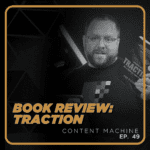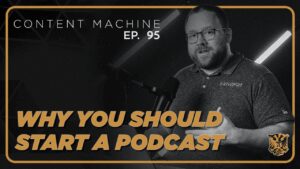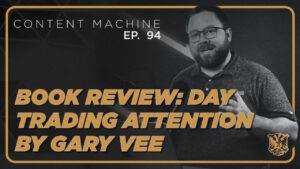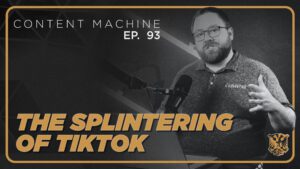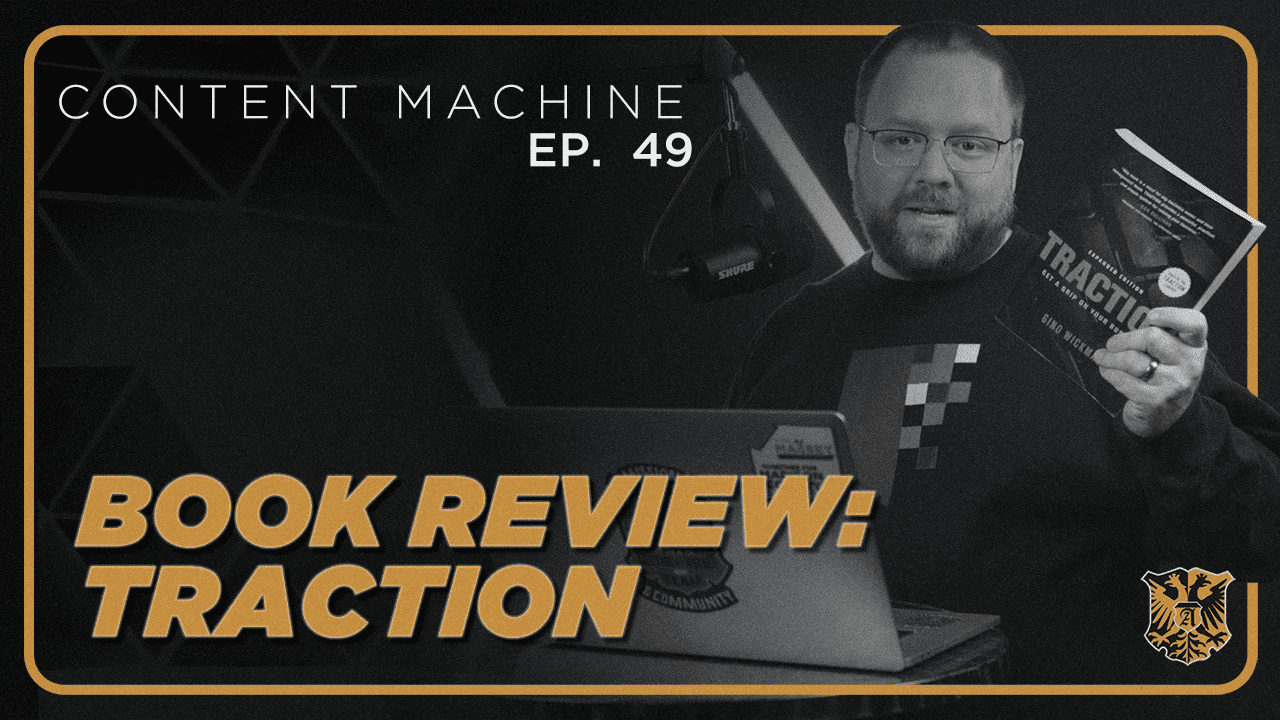
Classic problem. Business owner or leader is so caught up in doing the things that the business does that the business owner or leader fails to work on the business and fails to improve it over time, and that has consequences. It’s hard to do to work on the business instead of just in the business. As an owner or a leader, you have fires to put out. You have customers who need to talk to you. It’s the classic urgent slash important grid, and you stay in the urgent grid. But how do you move to the important things? Many people regularly fail to work in the important grid. The urgent is bright and shiny, but the important changes things in the long term. And can be the key to success or failure. So how do you do this? How do you focus on the long term and important changes you need to look at in your business? Let me introduce you to Traction by Gino Wickman, which is the book behind the EOS or the Entrepreneurial operating system. This book is a step-by-step manual on how to get, as they say, a grip on your business.
Some business books are largely theoretical or stay at a 50,000-foot view. Traction does not do that. Traction takes you from day one all the way through implementing an entire operations system in your business that will allow you to make plans and execute those plans too, above the hustle and bustle of everyday work. This book tackles everything from mission statements to 10-year vision casting. It has become one of our most common recommendations to people when we’re speaking about how to run a business. We ran a business for approximately eight years before we introduced ourselves to EOS, but I think it’s going to be a huge difference maker in the road ahead. Eos breaks a business into six key components: vision, data, processes, traction, issues, and people. Each one of these components are things that you’ll work on during the course of implementing EOS and running EOS throughout your entire company. Vision is the overall picture of where you’re going. It’s the 10-year picture of what you want to accomplish. People is making sure that people on your team are in the right seats on the bus, and frankly, that they’re on the right bus. Data is what you look at to know how you’re doing as a business, what you should score, and how you’re scoring, and how to improve that metric that means the most to your business’s success.
Issues are things that come up that need to be discussed with the team and have to be improved on and you get to talk about them weekly. Processes are the way that you do business, and this is going to be an area that you look at your systems and improve your systems. Traction is where you take the vision, the processes, and the issues, and you turn them into action steps that make a difference in how you run your business. This book does a great job of going from a 10-year vision to details like how to run a meeting to get to the 10-year vision. It is clearly written by someone who’d been in an entrepreneur’s shoes but had figured out how to structure things in a way that made progress to get traction, or as they call it, to go from vision to traction. One thing is that you’re going to think that you know about your business until you start EOS. It’s going to reveal things to you that you didn’t know about or things that you thought you knew about your business that are wrong. This book may need to be on my reading list every year.
In the next episode, I’m going to talk about our first year with EOS, what we’ve learned and how it’s worked out, and hopefully what we’re looking forward to in the next year as well.

